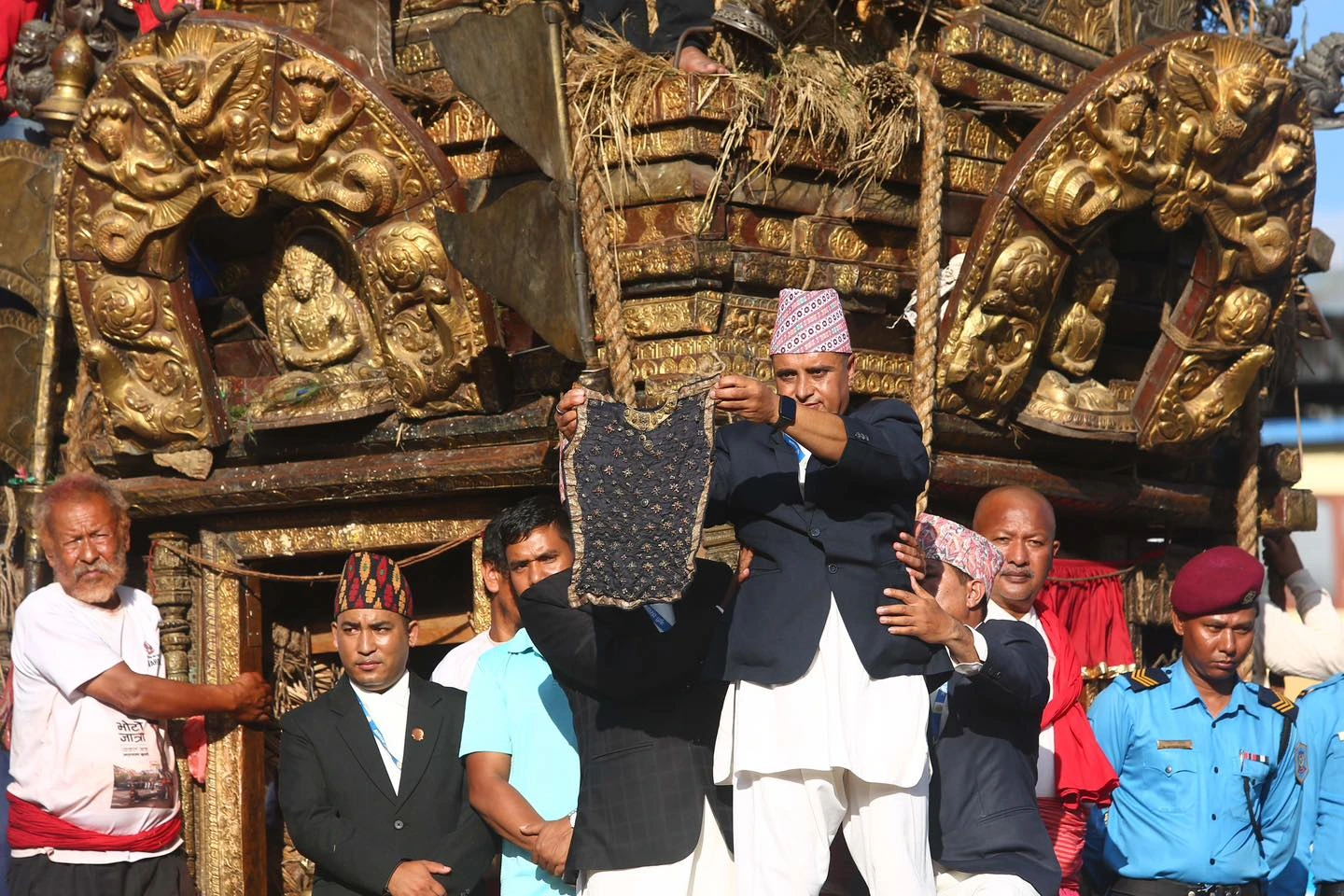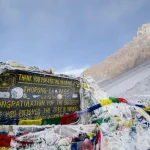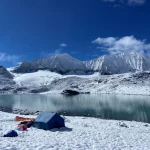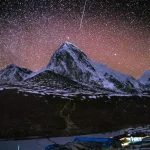Unveiling Bhoto Jatra: Nepal’s Epic Cultural Spectacle
Bhoto Jatra, also known as Bhoto Dekhaune Jatra, is a culturally significant festival celebrated in Nepal’s Kathmandu Valley, particularly in Lalitpur (Patan). This vibrant event marks the culmination of the Rato Machhindranath Jatra, one of the longest chariot processions in Nepal.
The festival’s highlight is the ceremonial display of a sacred jeweled vest, or bhoto, believed to belong to the deity Rato Machhindranath, the god of rain and harvest.
Held annually in April or May, Bhoto Jatra attracts thousands of devotees, locals, and tourists to Jawalakhel in Lalitpur. This article delves into the history, rituals, cultural significance, and tips for experiencing this unique Nepali festival.

What is Bhoto Jatra?
Bhoto Jatra is a key component of the Rato Machhindranath Jatra, a month-long festival dedicated to the deity revered as the protector of agriculture and rain. Celebrated in Lalitpur, the event involves a grand chariot procession that concludes with the display of the sacred bhoto at Jawalakhel.
Deeply rooted in Newari culture, the festival showcases Nepal’s rich heritage through vibrant processions, traditional music, and communal participation. Devotees believe the bhoto’s display ensures blessings for prosperity, good harvests, and protection from natural calamities.
The festival is a vibrant display of faith and culture, drawing crowds to witness the ceremonial unveiling of the jeweled vest from the Machhindranath chariot. It symbolizes divine blessings and communal unity, making it a must-see for tourists exploring Nepal’s living traditions. For more on Nepal’s festivals, visit Nepal Traveller.
The Legend Behind Bhoto Jatra
The origins of Bhoto Jatra are steeped in mythology and folklore. A popular legend tells of a farmer who received a jeweled vest from the Nagas, serpent deities, as a reward for curing the wife of a Naga king. The vest was stolen and later appeared during the Rato Machhindranath Jatra.
To resolve the dispute over its ownership, it was decided that the bhoto would be displayed annually until its rightful owner claims it, a tradition that continues today. Learn more about Nepal’s mythological traditions at The Kathmandu Post.
Another tale links the bhoto to Karunamaya, another name for Rato Machhindranath, suggesting the vest belongs to the deity himself. These stories add mystique to the festival, blending history and spirituality.
Rituals and Celebrations of Bhoto Jatra
- Chariot Procession: The festival begins with the month-long Rato Machhindranath Jatra, where a massive wooden chariot carrying the deity’s idol is pulled through the streets of Lalitpur. The chariot, adorned with colorful decorations, is a focal point of devotion.
- Bhoto Display: On the final day, the sacred bhoto is displayed from the chariot at Jawalakhel. A high-ranking official, often with the Kumari (living goddess) and dignitaries, holds up the vest four times, facing each cardinal direction, symbolizing its presentation to the world.
- Cultural Performances: The festival features traditional Newari music, dance, and rituals, with devotees chanting hymns and offering prayers. Explore Newari music at Nepal Times.
- Community Participation: Locals from the Newari community and beyond join in, creating a vibrant atmosphere of unity.
The rituals are accompanied by the rhythmic beats of traditional drums and the aroma of incense, creating a sensory-rich experience. The event is a testament to Nepal’s deep-rooted traditions and communal spirit.

Cultural and Spiritual Significance
Bhoto Jatra holds immense cultural and spiritual significance for the people of Kathmandu Valley. For the Newari community, it is a celebration of their heritage and devotion to Rato Machhindranath.
The festival reinforces beliefs in divine protection, agricultural prosperity, and communal harmony. The bhoto’s display symbolizes hope and fairness, as it awaits its rightful claimant.
For tourists, Bhoto Jatra offers a window into Nepal’s living culture. The vibrant processions, traditional attire, and spiritual fervor make it a must-visit event.
It also highlights the coexistence of Hinduism and Buddhism in Nepal, as Rato Machhindranath is revered by both communities. For more on Nepal’s religious harmony, check Britannica.

Tips for Experiencing Bhoto Jatra
- Plan Your Visit: Bhoto Jatra occurs in April or May. Check local calendars or Nepal Tourism Board for exact dates, as they vary based on the lunar calendar.
- Arrive Early: The event at Jawalakhel draws large crowds. Arrive early to secure a good spot to view the bhoto display and chariot procession.
- Respect Traditions: Dress modestly and follow local customs, as Bhoto Jatra is a sacred event. Avoid disrupting rituals or taking photos without permission.
- Explore Lalitpur: Visit nearby attractions like Patan Durbar Square, a UNESCO World Heritage Site, to enhance your cultural experience.
- Stay Safe: Crowds can be overwhelming. Keep belongings secure and stay hydrated during the festival.
By planning ahead, you can fully immerse yourself in the vibrant atmosphere of Bhoto Jatra and create lasting memories of Nepal’s cultural richness.
Frequently Asked Questions About Bhoto Jatra
What is the significance of the bhoto in Bhoto Jatra?
The bhoto is a sacred jeweled vest believed to belong to Rato Machhindranath or a divine entity. Its display symbolizes fairness, divine blessings, and prosperity for the community.
When and where is Bhoto Jatra celebrated?
Bhoto Jatra is celebrated in April or May at Jawalakhel in Lalitpur, as part of the Rato Machhindranath Jatra.
Can tourists attend Bhoto Jatra?
Yes, tourists are welcome to attend Bhoto Jatra. It’s a public event, but visitors should respect local customs and arrive early to fully experience the festivities.
Bhoto Jatra is more than a festival; it’s a celebration of Nepal’s cultural heritage, spirituality, and community spirit.
Whether you’re a local devotee or a curious traveler, this vibrant event offers a unique opportunity to witness the heart of Kathmandu Valley’s traditions.
Plan your visit to Lalitpur and immerse yourself in the magic of Bhoto Jatra!








